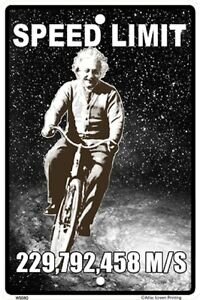How you can make your shadow travel faster than light
As physicists, we often say “nothing can travel faster than the speed of light.” You may have heard the words "cosmic speed limit" before and perhaps even know the value—approx. 300,000 km/s. So when I say your shadow can travel faster than light, I don't blame you if your skeptic senses are tingling. But humour me, because shadows are one thing that can travel faster than light.
Shadows are a phenomenon we experience constantly in everyday life. All that is needed, is for something to obscure light. It’s as simple as that. A tree's shadow (a.k.a. shade) provides us with a nice place to sit and read, the Moon’s shadow gives us the lunar phases (new, crescent, half, full, etc.), and the shadow of your hands can make for rather entertaining puppet shows. Shadows give us all these great things, but what makes them even more awesome, is that they are unbound by the cosmic speed limit.
Credit: ebay.com
Credit: cbc.ca
To visualize this, imagine you're camping and it's dark out. You and another person are in a tent with a flashlight making shadow puppets on the wall. If you've never done this, it can be pretty entertaining—I highly recommend. All you need is to hold a flashlight in the air, and move your hands in front of the lens. If you get really good like Hans Davis you can make chimps and jockeys riding horses and such. Now in the tent there is also a fly, and it flies across the flashlight lens during your puppet show. In that quick moment, you see a fly shadow whip across the wall, super duper fast.
Why did this happen? As light exits the flashlight lens, the light beam spreads out. Near the lens where the fly crossed, the beam was only maybe 2 inches wide. But, once the beam reaches the tent wall, it’s over 2 meters wide. Here's the cool part: the shadow of the fly must travel across the tent wall in the same amount of time as it took the fly to cross the 2-inch-wide beam near the lens. This means, if the fly flew at 2 inches per second, its shadow traveled 2 meters per second across the tent wall.
Now let's have some fun with this concept. Imagine instead of a camping flashlight, you had an ultraluminous searchlight (is that a real thing? no I made it up) and instead of pointing it at the wall of your tent, you pointed it at the new Moon. (The ultraluminous searchlight is so luminous, that the beam spreads out and illuminates the entire new Moon making it an artificially “full Moon.”) Now, if that same fly flew across the searchlight lens in a second, its shadow would cross THE ENTIRE MOON in a second, meaning the fly shadow will have traveled 3.5 million meters per second (or about 1% the speed of light).
But the fly is not you, and I claim you can make your shadow travel faster than light. To do this, you only need to move your hand across the searchlight in 10 milliseconds. That, actually, might be kind of difficult. The average punch by a boxer could cross a 20 cm searchlight in about 20 milliseconds. So you just have to punch twice that hard, or maybe try more of a chop-like motion.
Are you wondering: did we just break physics!?
Sadly no, and here's why: The cosmic speed limit only pertains to information, and a shadow doesn't contain any information. Light contains information (e.g. energy, frequency), but a shadow is only the obscuration of information. But what if we embed Morse code into a shadow sequence? Surely that’s information. Well that may be true, but that Morse coded message cannot be sent across the Moon in a single light-obscuring swipe of your hand.
Credit: aryeh95


